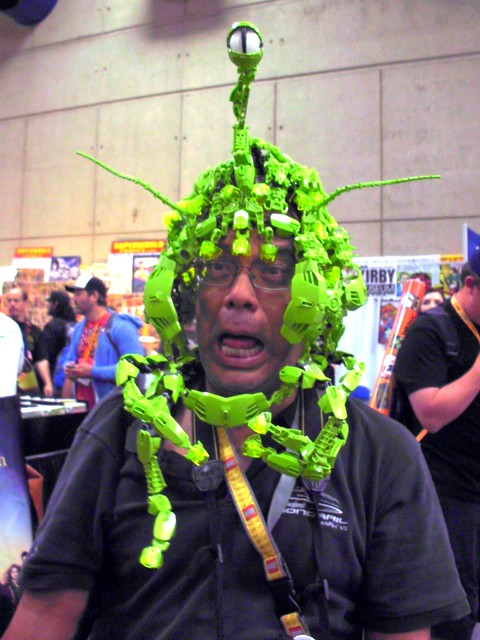There are probably few people out there who have more experience within the LEGO community as Joe Meno.
Joe has been a central figure in LEGO community for well over a decade. He publishes the AFOL (Adult Fans of LEGO) magazine BrickJournal, and co-wrote Cult of LEGO, which is a great book that I have used as a reference for my project so far.
On top of being a writer/editor/publisher, Meno is also an accomplished LEGO builder who displays his creations at LEGO events, as well as online.
Images of Joe's creations, as well as posts regarding all different sorts of LEGO, can be found on his personal blog.
Joe Meno: I am a former graphic designer who became a magazine editor for the LEGO hobby. Basically, I moved my profession to my hobby. I got back into LEGO building in 1999, when I got a job at the LEGO Imagination Center in Orlando, Florida. I didn’t last that long in that job, but I discovered the online LEGO community and eBay soon after, which pretty much doomed me :-). From that beginning, I got involved in the community by first attending conventions then volunteering for events and finally leading a couple. Somewhere in there, I kept on building and began thinking about doing a magazine, which was launched online in 2005 and printed two years later. Because of my activities, I have participated in a few LEGO projects, including set design and beta testing of LEGO software.
Images of Joe's creations, as well as posts regarding all different sorts of LEGO, can be found on his personal blog.
 |
Milo Krimstein: Can you tell me a little bit about who you are, and what is your background in the LEGO community?
MK: What kind of a role would you say that you play in the LEGO community?
JM: My role now is mostly a journalist and advisor. My building is still known, but nowhere as much as the magazine.
MK: Is LEGO a toy, or is it more than a toy? How and why?
JM: It’s more than a toy - it’s a medium. While childish can play with the brick, adults can use the brick as an art medium or prototyping material, for starters. The simple building system makes building accessible to those ‘non-creative’ builders who are engineers or math-based. A LEGO set can make a 2-D mosaic, a 3-D model, or a functioning robot, so saying that LEGO is just a toy is simplistic.
 |
| Students use LEGO Mindstorms in the First Lego League. |
MK: In what ways can and/or do you use LEGO as a tool for education?
JM: I use the MINDSTORMS system for robotics classes in the summer and at school and help the same school with FIRST LEGO League. LEGO building is also used for storytelling by having kids build something and then talking about it afterwards.
MK: How has LEGO, and the culture surrounding LEGO, evolved from the past to the present?
JM: LEGO has progressed from bricks to wheels to figures to machines to computers….the culture has progressed from exclusively play to becoming a form of expression to adults and children.
MK: What does LEGO represent in our culture?
JM: Childhood on one level and creativity on another.
MK: What might the future hold for LEGO and the LEGO community?
JM: Tough one - LEGO is the best building brick out there now and the current challengers are not very strong. The biggest challenge may be coming from 3-D printing: why buy sets if you can make your own parts? How LEGO deals with that will determine how the community goes.



No comments:
Post a Comment